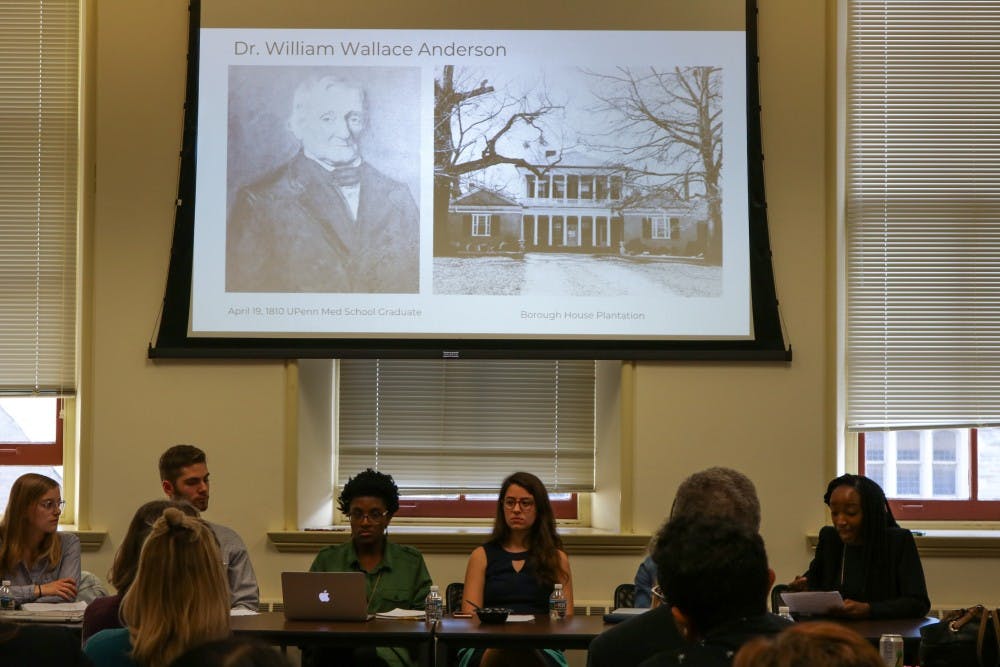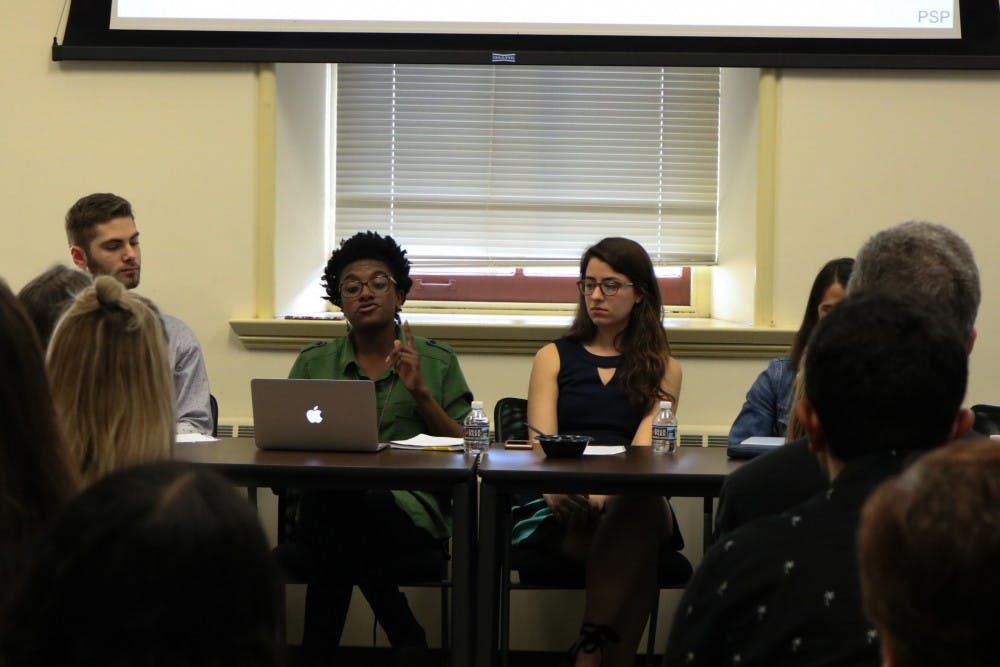
The student researchers in the Penn Slavery Project expanded upon their initial findings further demonstrating the University's connections to slavery at a presentation April 23.
This semester, the group focused on the construction of Penn's early campus — what was then known as The Academy of Philadelphia — as well as the connections of contemporary professors and alumni to the slave trade.
The students unearthed evidence that implicated several leading figures, such as Robert Smith, a prominent architect for the Academy and a slaveholder, as having substantial involvement in the slave trade. There is also significant evidence that the University had considerable knowledge of the connections, which included a campaign soliciting funds from a number of wealthy donors, many of whom owned slaves.

Perhaps the most explicit evidence that Penn documented and was aware of connections to the slave trade involved Ebenezer Kinnersley, an early professor of the Academy who worked alongside Penn founder Benjamin Franklin. Kinnersley was reimbursed by the University from 1757 to 1770 for the work done by his enslaved person on campus.
"These funds are coming directly from people who are benefiting from the slave labor and the exploitation of enslaved bodies and the University was aware," College senior and PSP member Caitlin Doolittle said during the presentation. "None of this is happening in a vacuum. They are not ignorant to the fact that these people are slaveowners."
For two semesters, a group of undergraduate students has explored Penn’s ties to the slavery and the slave trade. Throughout the process, the students used material from local, online, and University archives.

This semester, the group included Doolittle, College senior VanJessica Gladney, College freshman Carson Eckhard, 2015 College graduate Breanna Moore, College sophomore Dillon Kersh, and College sophomore Brooke Krancer, the social media director at The Daily Pennsylvanian. The presentation Monday began with an introduction from history professor Kathleen Brown, who serves as a mentor.
The students also presented evidence showing that the Academy conducted fundraising tours in South Carolina as well as a Jamaican tour in the late 18th century.
Doolittle explained that this information, which is supported by early Trustees Minutes, indicated that the Academy, with the involvement of top administrators like the first Penn Provost William Smith, solicited funds from wealthy donors, many of whom owned slaves and plantations.
According to Eckhard, many Southern students, who could have financially benefitted from slave labor, also attended the University in the 19th century.
Moore presented her findings on her family legacy in relation to Penn. She tracked her lineage to her fourth great-grandmother who was enslaved by William Wallace Anderson, a Perelman School of Medicine graduate.
Moore noted that while Anderson graduated from Penn in 1810, it took more than two centuries for someone in her family to attend an Ivy League university.
"One year after I graduated from the University of Pennsylvania, only 751 African Americans students were enrolled as undergraduates," Moore said. "This is a direct correlation to the link to the slavery and inequalities that persist in African American communities."
Moore expressed gratitude for her education in her closing remarks and described financial aid for students like herself as "a step toward the right side of history."
Another piece of evidence came from using medical lectures and notes from the Library Company of Philadelphia along with other primary sources. Eckhard, who joined the group this semester, explained this evidence outlines the Medical School's historic connections to slavery.
“It’s interesting where information comes from,” Eckhard said. “Because slavery was so deep and pervasive in our society, the documents of it are scattered everywhere.”
Eckhard described how University lecturers used a collection of skulls to support the claim of a racial hierarchy, which other professors used to argue in favor of slavery. Much of the collection, she noted, is still on display in the Penn Museum of Archaeology and Anthropology.
The group made several suggestions concerning Penn's reaction to their findings.
They urged the University to retract its statement made by a spokesperson Ron Ozio in September 2016 that Penn had "found no direct University involvement with slavery or the slave trade."
They also called on Penn to join the Universities Studying Slavery coalition which includes Georgetown, Brown, and Columbia universities and to help educate the community on campus and in Philadelphia about this aspect of its history.
The group concluded with a question and answer segment. Many of the students expressed frustration at the lack of material capturing the experience of the enslaved individuals whom they studied and expressed their intention to continue with the project.
After the release of the group's initial findings, the University created a working group under the guidance of Provost Wendell Pritchett to "examine the role of slavery in Penn's early years."
Since its formation in January, several students expressed concern over the role of the faculty group. Gladney wrote a feature for 34th Magazine criticizing inaccuracies in the announcement of the group co-authored by Penn President Amy Gutmann and Pritchett.
"For me, 'Was Penn involved in slavery?' is an easy question to answer," she wrote. "Everything founded during America’s colonial period has ties to slavery."
The Daily Pennsylvanian is an independent, student-run newspaper. Please consider making a donation to support the coverage that shapes the University. Your generosity ensures a future of strong journalism at Penn.
Donate



